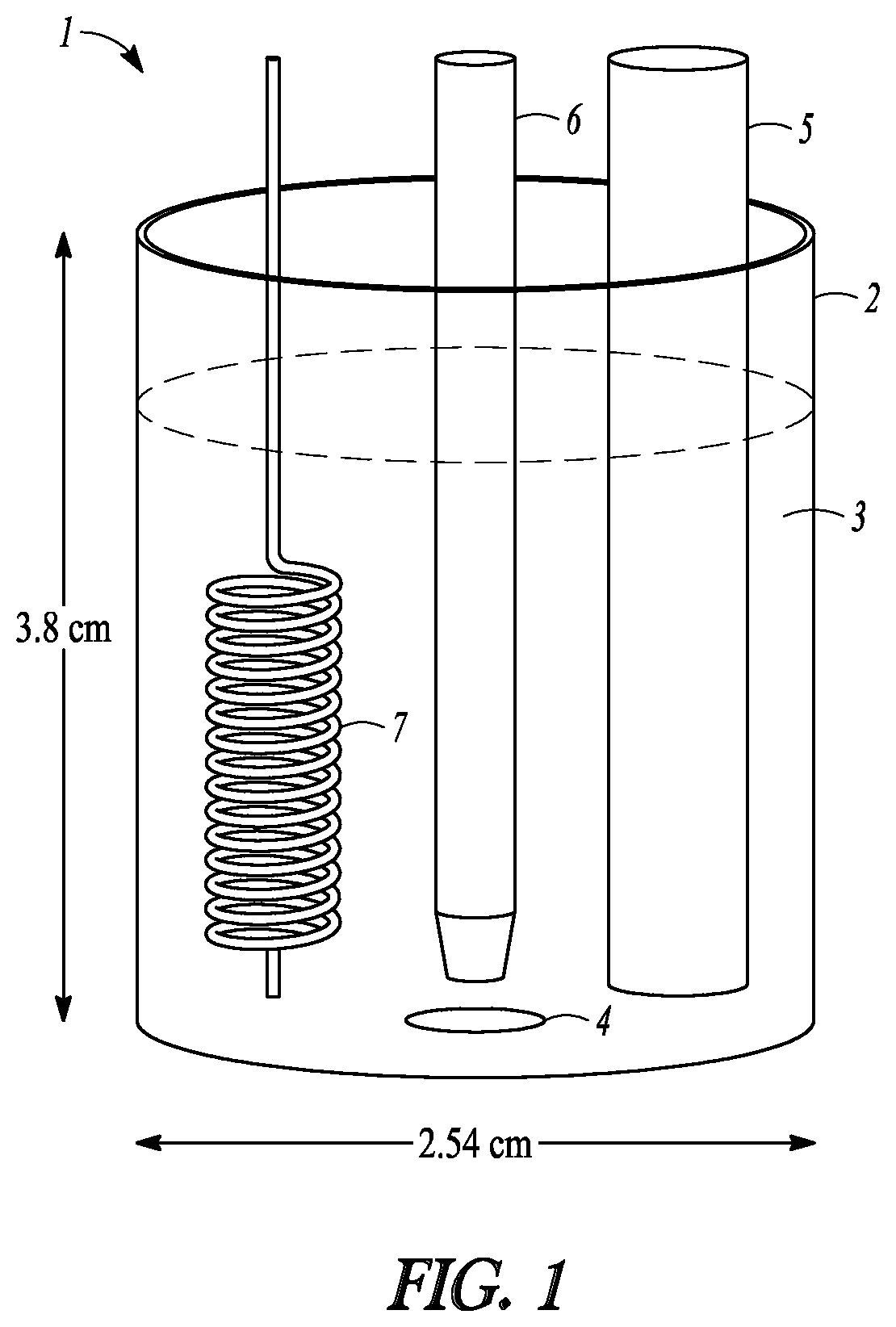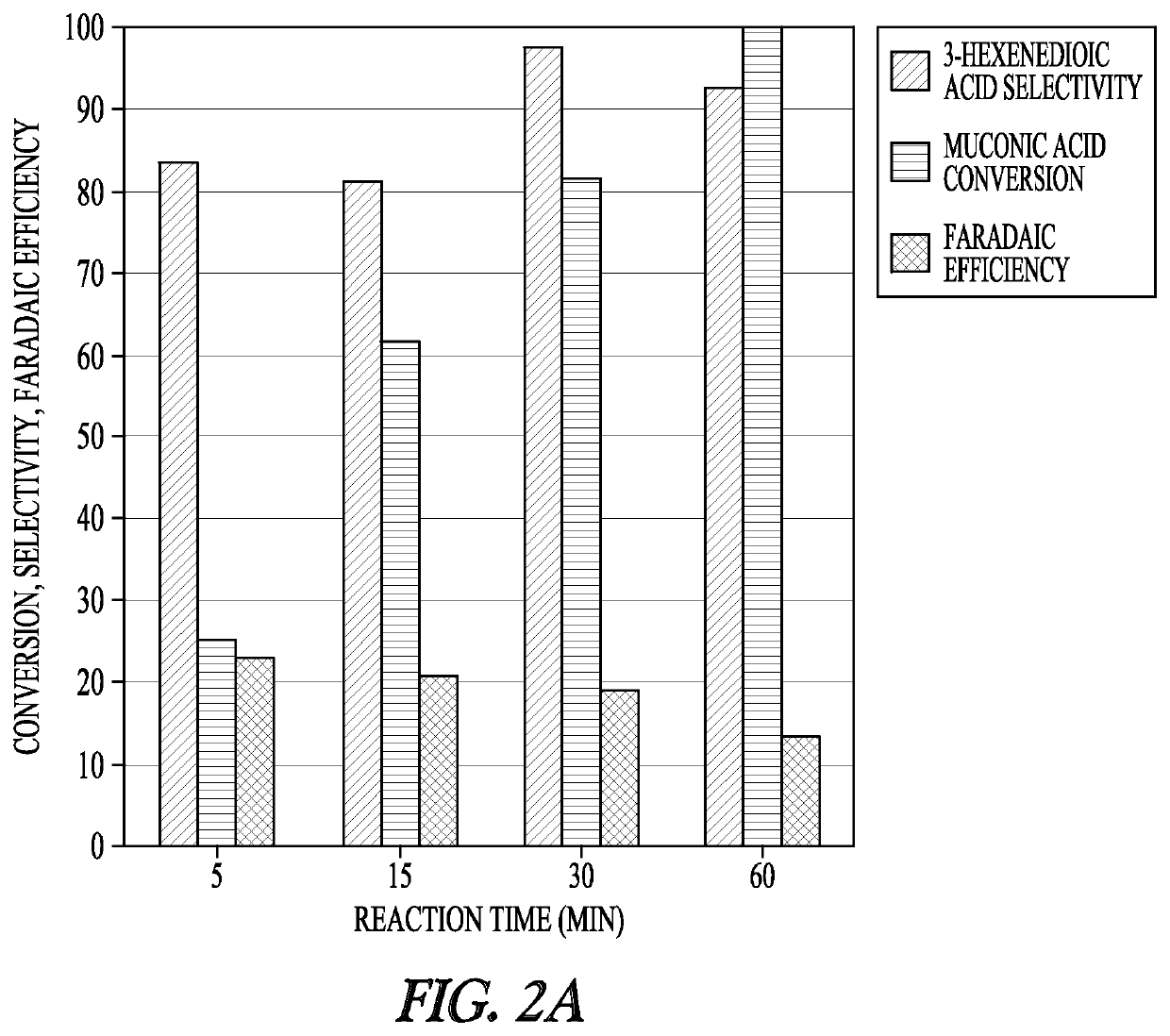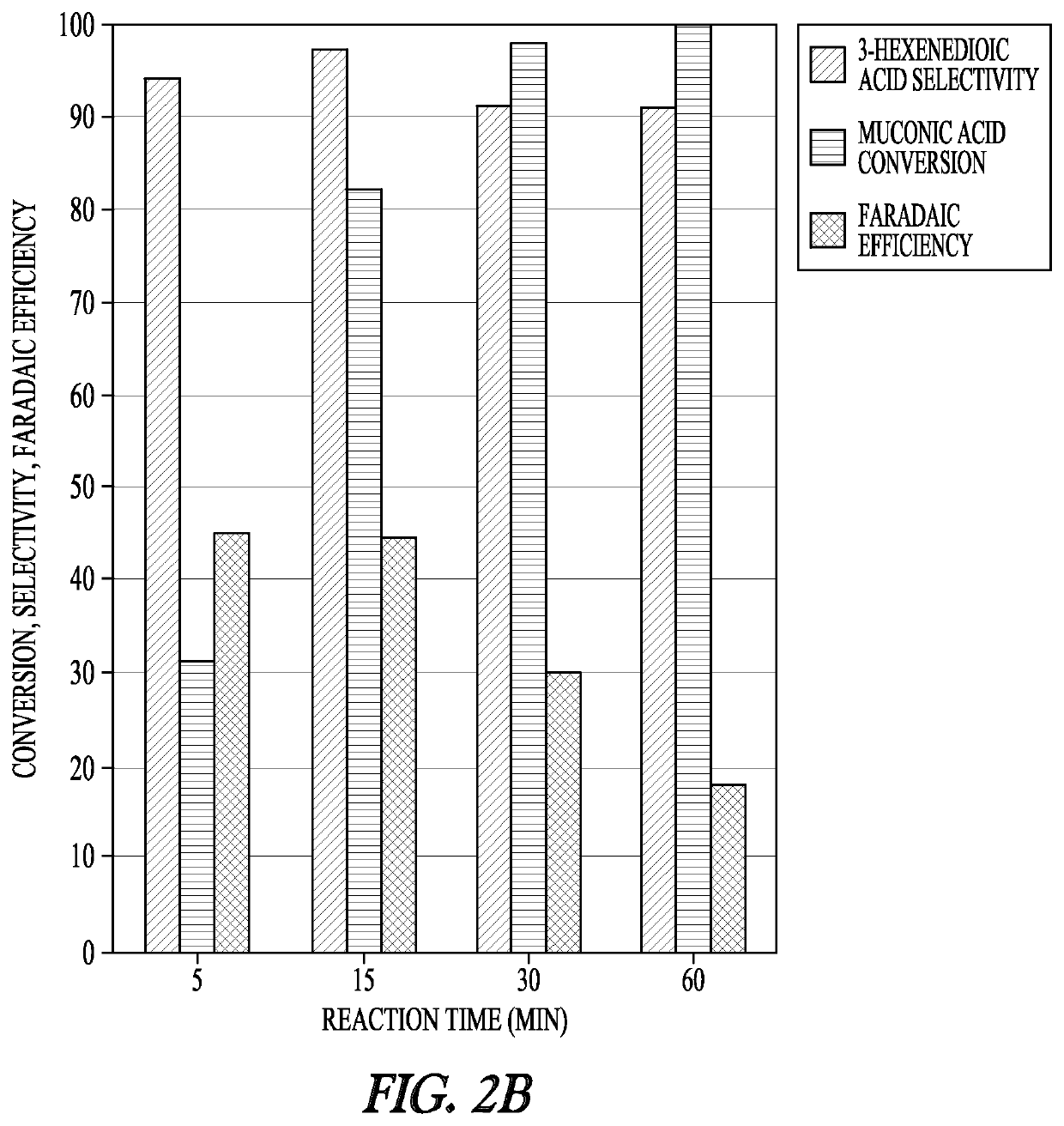Electrocatalytic hydrogenation of muconic acid
a technology of electrocatalytic hydrogenation and muconic acid, which is applied in the direction of electrocatalytic organic reduction, electrolytic organic production, electrolysis components, etc., can solve the problems of not being able to disclose the process to be useful in hydrogenating unsaturated alkene dioic acid, and many difficulties encountered, so as to reduce the catalyst loading of the reactor, reduce the risk of explosion and fire, and easy control
- Summary
- Abstract
- Description
- Claims
- Application Information
AI Technical Summary
Benefits of technology
Problems solved by technology
Method used
Image
Examples
example 1-1
lytic Hydrogenation of Muconic Acid in 1% Formic Acid
(1-1)(A). Catalysts / Chemicals.
[0120]A ⅜″ diameter lead wire was purchased from Rotometals (99.9%). A 3″ section of the purchased lead wire was used as the catalyst. A coiled platinum electrode (99.9%) was purchased from Pine Research Instrumentation. Formic acid was purchased from Sigma (99%). Trans,trans-muconic acid (98%) and cis,cis-muconic acid (>97%) were purchased from Aldrich. All aqueous solutions were formed using Millipore water (18.0 MQ).
(1-1)(B). Electrochemical Cell.
[0121]Electrocatalytic hydrogenation studies of muconic acid (MA) were carried out in a three-electrode electrochemical cell (1) depicted in FIG. 1. The container (2) was about 2.54 cm in diameter and about 3.8 cm high. The electrolyte level (3) shown is approximate. Current was passed through an aqueous reaction medium (3) including 1% formic acid in water (electrolyte) and varying concentrations of muconic acid. An Ag / AgCl reference electrode in 3 M NaCl...
example 1-2
on of Muconic Acid in Fermentation Broths
(1-2)(A). Catalysts / Chemicals.
[0127]A ⅜″ diameter lead wire was purchased from Rotometals (99.9%). A 3″ section of the purchased lead wire was used as the catalyst. A coiled platinum electrode (99.99%) was purchased from Pine research instrumentation.
[0128]Formic acid was purchased from Sigma (99%), trans,trans-muconic acid (98%) and cis,cis-muconic acid (>97%) were purchased from Aldrich. D-Glucose was purchased from Fisher Scientific (BP350-1), yeast nitrogen base without amino acids and ammonium sulfate were purchased from BD Diagnostic Systems (DF0335-15-9), ammonium sulfate was purchased from Fisher Scientific (BP212R-1), and complete supplement mixture (CSM) of amino acids was purchased from MP Biomedicals (MP11451031). Cis,trans-muconic acid was synthesized by allowing cis,cis-muconic acid to isomerize at room temperature in water for five days. All solutions were synthesized in Millipore water (18.0 MQ).
(1-2)(B). Fermentation.
[0129]Th...
example 2-1
lytic Hydrogenation
(2-1)(A). Materials and Methods.
[0136]The electrochemical studies were conducted in a three-electrode electrochemical cell using a BioLogic VSP-300 potentiostat. The Ag / AgCl in NaCl reference electrode and platinum counter electrode were purchased from BioLogic Science Instruments. The working electrode was purchased from Rotometals (Lead rod, 99.9%). Electrocatalytic hydrogenation experiments were performed in 11 mL of reacting medium with a stir bar at 700 rpm. During the chronoamperometry experiments, 0.5 mL samples of the reaction medium were taken at 5 min, 15 min, 30 min, and 60 min for analysis.
[0137]Samples were subsequently analyzed either by ultra-performance liquid chromatography (UPLC) or 1H NMR. For NMR analysis, the samples were dried at room temperature, reconstituted in deuterium oxide, and analyzed with a Bruker 600 MHz NMR spectrometer (AVIII600). UPLC analysis was performed with a Waters H-Class Acquity chromatograph equipped with a HSS C18 Colu...
PUM
| Property | Measurement | Unit |
|---|---|---|
| voltage | aaaaa | aaaaa |
| faradaic efficiency | aaaaa | aaaaa |
| faradaic efficiency | aaaaa | aaaaa |
Abstract
Description
Claims
Application Information
 Login to View More
Login to View More - R&D
- Intellectual Property
- Life Sciences
- Materials
- Tech Scout
- Unparalleled Data Quality
- Higher Quality Content
- 60% Fewer Hallucinations
Browse by: Latest US Patents, China's latest patents, Technical Efficacy Thesaurus, Application Domain, Technology Topic, Popular Technical Reports.
© 2025 PatSnap. All rights reserved.Legal|Privacy policy|Modern Slavery Act Transparency Statement|Sitemap|About US| Contact US: help@patsnap.com



